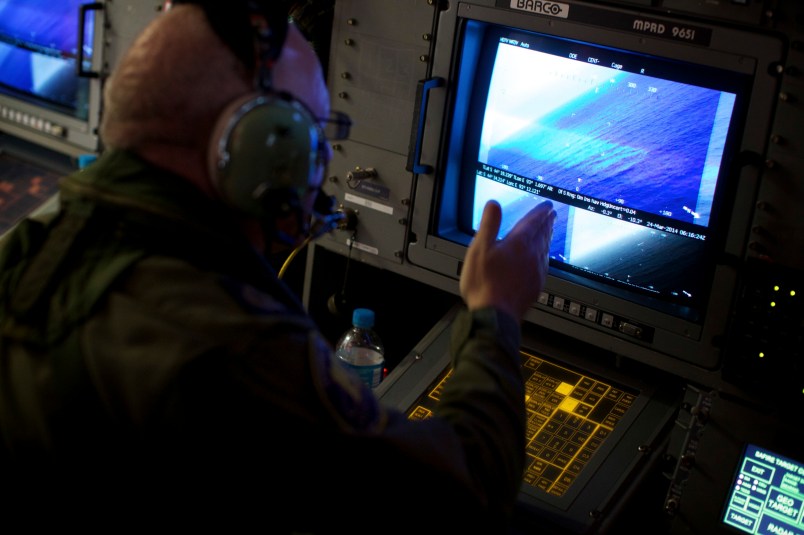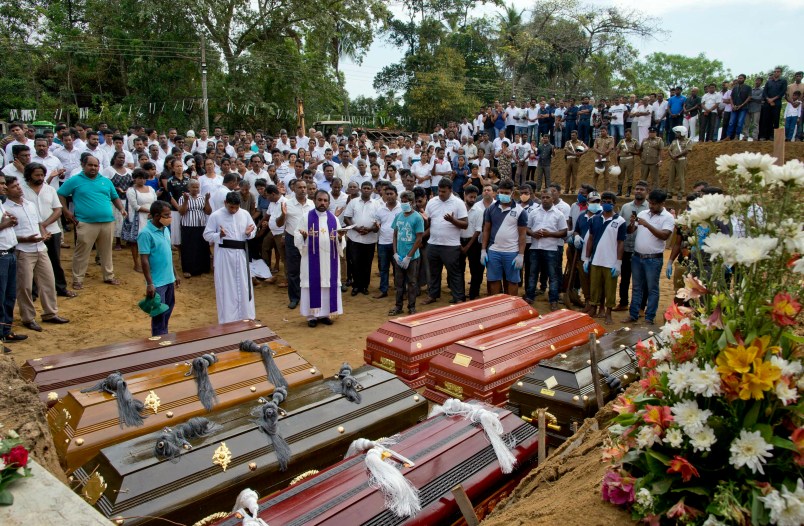KUALA LUMPUR, Malaysia (AP) — Malaysia’s civil aviation chief said Tuesday he has resigned to take responsibility after an independent investigative report highlighted shortcomings in the air traffic control center during Flight 370’s disappearance four years ago.
The report released Monday raised the possibility that the jet may have been hijacked even though there was no conclusive evidence of why the plane went off course and flew for over seven hours after severing communications.
Azharuddin Abdul Rahman said the report didn’t blame the civil aviation department for the plane’s loss but found that the Kuala Lumpur air traffic control center failed to comply with operating procedures.
“Therefore, it is with regret and after much thought and contemplation that I have decided to resign as Chairman of Civil Aviation Authority of Malaysia,” he said in his statement, adding he has served his resignation and will step down in two weeks.
The jet carrying 239 people from Kuala Lumpur to Beijing vanished March 8, 2014, and is presumed to have crashed in the far southern Indian Ocean. The investigative report, prepared by a 19-member international team, said the cause of the disappearance cannot be determined until the wreckage and the plane’s black boxes are found.
However, the report said the investigation showed lapses by air traffic control, including a failure to swiftly initiate an emergency response and monitor radar continuously, relying too much on information from Malaysia Airlines and not getting in touch with the military for help.
New Malaysian Transport Minister Anthony Loke said Tuesday the government has formed a committee to investigate and take action against any misconduct based on the report findings.
The report said there was insufficient information to determine if the aircraft broke up in the air or during impact with the ocean.
Scattered pieces of debris that washed ashore on African beaches and Indian Ocean islands indicated a distant remote stretch of the ocean where the plane likely crashed.
But a government search by Australia, Malaysia and China failed to pinpoint a location. And a second, private search by U.S. company Ocean Infinity that finished at the end of May also found no sign of a possible crash site.
Malaysia’s government has said it will resume search if credible evidence on the plane’s location emerges.










With all the satellite coverage I assume the US military has I’m surprised they don’t have anything.
Edit: Like this example. Granted it is probably very narrowly focused
There is a difference between having satellite coverage and having satellite imagery.
Yes, the US military has very good global satellite coverage. And not just the US either; there are a huge number of commercial surveillance satellites up there. If you want, you can get pictures of anywhere on earth, at one-metre resolution, every fifteen minutes or so. You can get radar imagery - lower resolution, but it sees through cloud and works at night - every half an hour or so. On its final flight, MH370 was probably overflown by twenty or thirty surveillance satellites.
But you can only get it once you’ve asked in advance. You can go to a commercial imaging company like Digital Globe and say “get me a photo of downtown Pittsburgh tomorrow” and they’ll do it. But if you ask for a photo of downtown Pittsburgh last week, they’ll probably just tell you they haven’t got one.
The reason is that imaging satellites are not taking pictures all the time. They only have limited onboard storage, downloading is expensive, and even taking the pictures requires power. So they take pictures when they’ve been tasked to do so, and the rest of the time they don’t. The only surveillance satellites the US military has that are always observing are the early warning satellites of the Defense Support Program, which watch for the heat blooms of a ballistic missile launch (and which also pick up other large heat blooms like explosions).
Now, you might be lucky. If someone else had already asked for the photo you wanted, then Digital Globe would have tasked one of its satellites to take it, they would have it on file, and they’d happily sell it to you. Or they might have taken the picture themselves on spec, on the grounds that it was the sort of thing someone might come and ask for. And the same thing applies to the US government; if you’re an intelligence type and you suddenly realise you want a satellite picture of central Iran from six months ago, chances are they’ll have that on file.
Neither of those are going to apply to pictures of a remote strip of the southern Indian ocean; Digital Globe would not have tasked any of its satellites on that. Neither would the US military. Because why would they?
You may be completely correct, but I’m willing to believe our military has a lot better satellite, imagery, and other coverage than we know or they admit to. And if they do have a clue to what happened to this plane they may not want to tells us thinking it would reveal too much, with no real change in the outcome of events.
They definitely have better coverage than they admit to in terms of resolution and so on. But, as I said, they don’t have every satellite taking imagery all the time, for perfectly good practical reasons, and the finest spy camera in the world is useless if you don’t turn it on and point it at something. They only take imagery of stuff they are interested in, or stuff that they think they might one day be interested in. And the southern Indian ocean is pretty much the least interesting part of the planet from the point of view of the US national security establishment (and virtually everyone else).
Note also that the search for MH370 was conducted by Australia. Australia is one of the Five Eyes; they get to see US satellite imagery.
What possible secret could be jeopardised if the US were to say “one of our spy satellites saw the crash site, here’s the latitude and longitude”? They wouldn’t have to give the photos out, just announce the grid. Everyone who is worried about being a subject of US satellite surveillance already assumes that the US is imaging them from orbit!
Don’t argue with any of that but I’m still guessing they could tell us more than they have. In a similar vein, we didn’t hear much about Donald’s campaign being watched and even infiltrated to check for collusion until after it became apparent that there was some and it was relative to Muller’s investigation. Another guess is that if it had turned up nothing we’d never have known about the infiltration. No our government agencies don’t watch everything because they can’t, but I believe they do a lot more than they let us know or we have found out about.